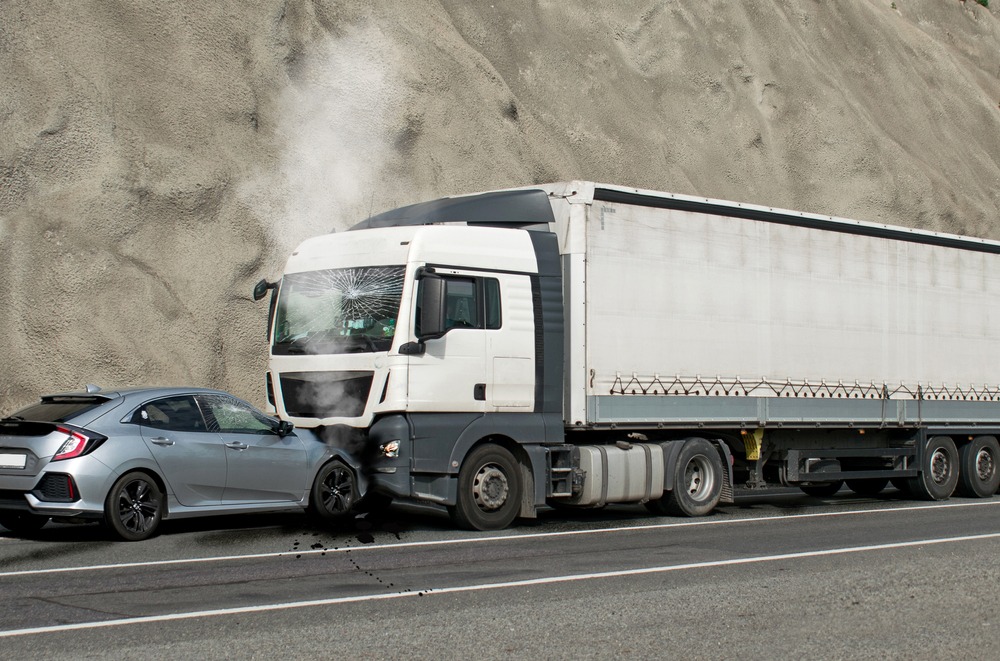What Are the Benefits of Modern Technologies in Minimizing Truck Accidents?
Last updated Monday, November 4th, 2024

The Insurance Institute for Highway Safety notes that modern technologies could minimize truck accidents, as well as grievous injuries. It notes that with backup cameras, collision avoidance systems, and built-in GPS tools, motorists can drive more safely than ever before. In the long run, this could reduce the number of collisions each year.
However, the International Journal of Environmental Research and Public Health notes that with these modern technologies come distractions. For instance, it notes that touchscreen consoles can provide more distractions than benefits. This means that to benefit from in-car safety technology, one must use them responsibly.
Truck Cameras Enhance Visibility
When you’re driving a large truck, visibility is critical. Traditional mirrors often fail to provide adequate sight lines for truckers, especially in high-traffic areas. The Federal Motor Carrier Safety Administration (FMCSA) has started to allow trucking companies to replace traditional two-mirror systems with certain camera monitor systems.
Although there are still stringent regulations that limit the ways you can replace mirrors with cameras, many trucking companies already have these cameras installed. The added visibility allows truckers to detect vehicles behind them and on either side, thereby reducing the potential for accidents.
Collision Avoidance Systems Help Truckers Avoid Hazards
Collision avoidance systems use sensors to help truckers detect and avoid collision risks while on the road. In 2016, the National Highway Traffic Safety Administration (NHTSA) determined that collision avoidance systems in heavy vehicles improved driver braking response times. It also noted that with these systems, truckers were more likely to avoid reckless driving.
Responsive Routing and GPS Systems Reduce Distracted Driving
Motorists have relied on GPS systems for decades. Improvements in routing technology allow truckers and their logistics departments to map routes that are safer, less congested, and more efficient.
Using real-time data, routing, and GPS technologies helps truckers avoid:
- High-traffic areas
- Narrow roads
- Low overpasses
- Blocked-off areas
- Roads that do not allow heavy vehicles
These systems also prevent truckers from engaging in distracted driving, such as using their personal cell phones for directions.
Electronic Logging Devices Ensure Truckers Follow Federal Mandates
Electronic logging devices (ELDs) are used by trucking companies to track shipments and ensure that drivers follow legal guidelines. ELDs are used to monitor driver activities, including:
- The number of miles driven
- How long the engine is running
- How long the vehicle is in motion
ELDs ensure that drivers adhere to the FMCSA’s Hours of Service Regulations. These regulations outline how long truckers can drive, as well as how many breaks they should take. The goal of these regulations is to prevent fatigued driving and other actions that can harm others.
Tire Pressure Monitoring Increases Trucker Safety
The FMCSA discovered that certain tire monitoring systems effectively increased vehicle fuel. These systems also gave truckers more control over their tires’ conditions. Tire pressure sensors can be used to detect:
- Over-inflated tires
- Low tire pressure
- Slow leaks
- Sensor and antenna malfunction
With real-time data on their tires’ condition, drivers can take preventative measures to avoid flat tires and blowouts. This allows truckers to better maintain their trailers and give them the chance to address certain hazards.
Automatic Tire Inflation Systems Prevent Tire Blowouts
Automatic tire inflation systems (ATIS) can be used to modify tire pressure in response to temperature fluctuations, altitude, load shifting, and other conditions that can affect tire performance.
By ensuring that the tires are kept at optimal pressure, ATIS systems reduce the potential for excessive tire wear and blowouts.
Modern Technology Can Support Your Truck Accident Claim
While modern technologies can improve road safety, accidents still happen. If you were involved in a serious collision and suffered harm, these technologies can actually prove your accident’s cause.
Consider the ELDs we discussed earlier. Your lawyer could access this data to learn how long the trucker drove before hitting you. If the trucker violated the FMCSA’s Hours of Service Regulations, you could hold them accountable through a claim or lawsuit.
Tire pressure monitors, load trackers, and cameras can also support your compensation claim by:
- Providing video evidence of how your accident happened
- Supplying vehicle maintenance and repair data
- Establishing the cause of an accident
- Pinpointing the truck’s location at the time of the accident
When you partner with an injury lawyer, they will use other information to prove your right to damages, such as the police report and eyewitness statements.
You Have Legal Options with Isaacs & Isaacs Personal Injury Lawyers
Did you suffer harm in a truck accident? If so, our team is ready to manage your injury case. Using modern technologies (and other supporting evidence), we can prove that because of another party’s negligence, you suffered harm.
Compensation in your case could account for the full range of your injury-related expenses, including your medical bills, lost income, and pain and suffering. To start your free case review with our injury firm, call us today.










